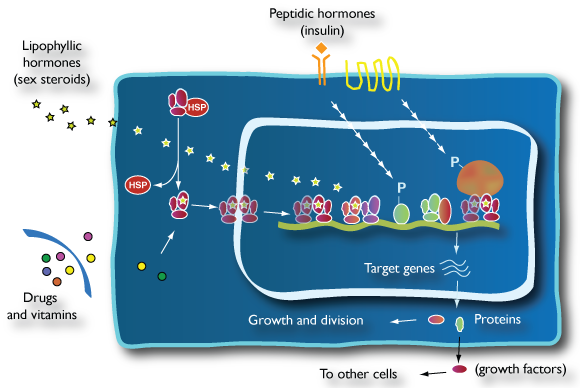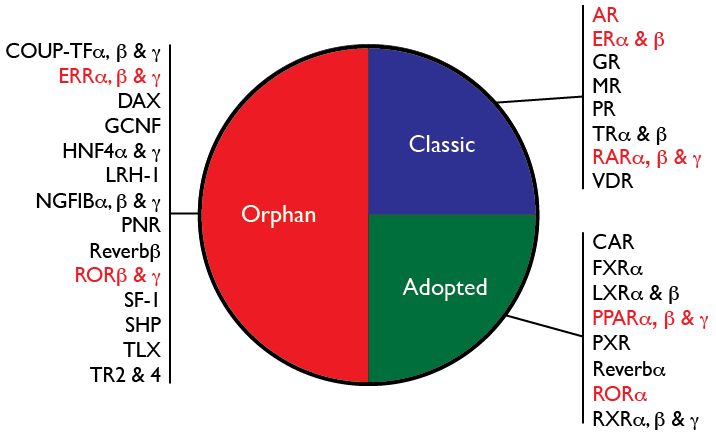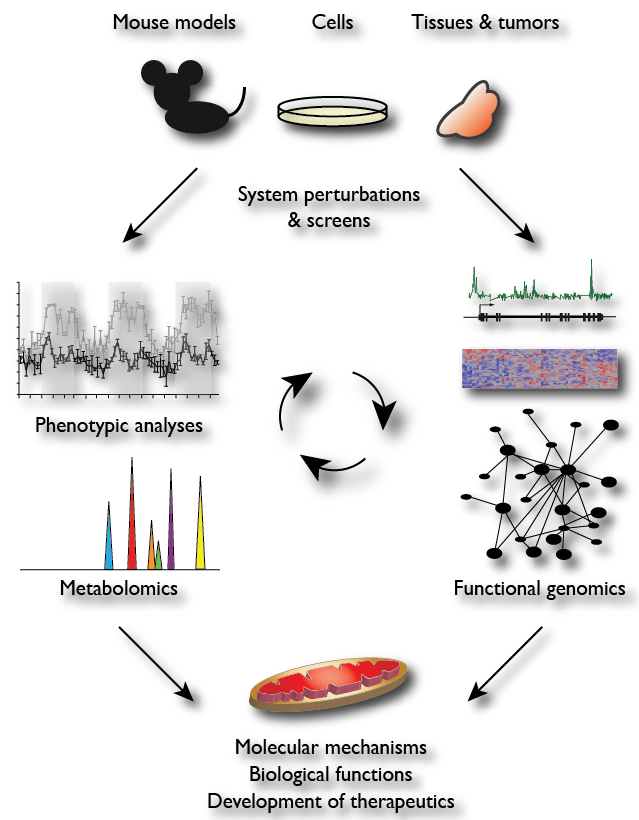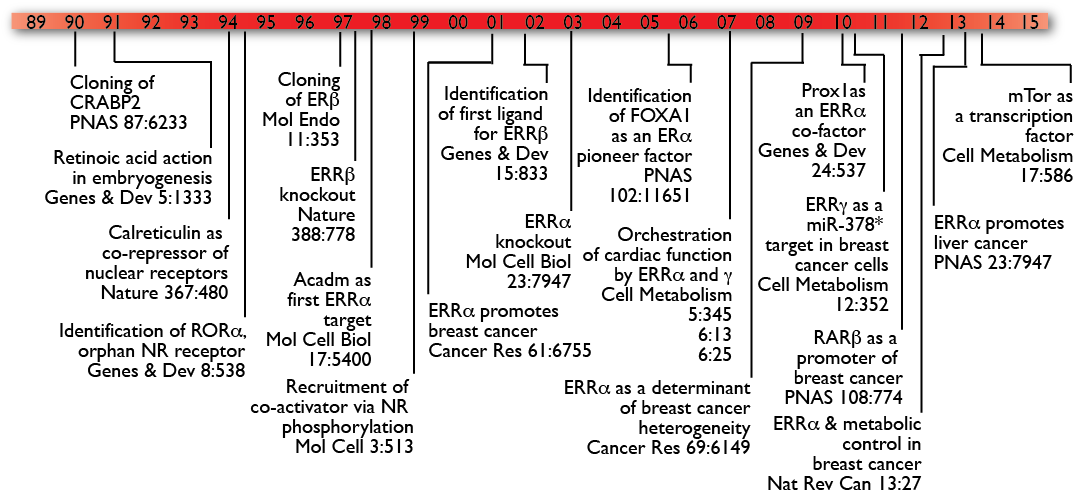Overview

Steroids, thyroid hormones and derivatives of vitamin A are small liposoluble molecules that regulate development, differentiation and physiological response to diverse stimuli and are essential to the survival of the individual. The effects of each hormone depend primarily on a protein referred to as a receptor. These receptors function as transcription factors that control gene networks specific to each cell type and tissue. The activity of these receptors can also be modulated indirectly by extracellular signals. Natural and synthetic analogs of these substances are used extensively to control a broad spectrum of human diseases including cancer. The study of these receptors is thus important to understand the molecular mechanisms involved in the cellular response to these inducers and to develop novel therapeutic approaches to manage and cure a variety of diseases.

Superfamily of nuclear receptors
Members of the superfamily of nuclear receptors can be divided in three classes: classic, adopted and orphan. Classic members of the superfamily of nuclear receptors were originally cloned on the basis that known hormones were transducing their physiological functions through binding to proteins referred to as receptors (e.g. glucocorticoids and sex steroids). However, the search for new members of the superfamily led to the identification of multiple genes encoding proteins with structural features found in nuclear receptors. These receptors were referred to as orphan nuclear receptors. Eventually, new hormones and known metabolites were found to act through some of these receptors, and they are now referred to as adopted receptors. Orphan nuclear receptors remain in this category until the identification of their natural ligands.
Receptors studied in our lab:
The ERRs (Estogen-Related Receptors)
The ERRs (Energy-Regulatory Receptors)
The ERRs are orphan receptors but their activity can be regulated by synthetic drugs. Members of the ERR subfamily are considered master regulators of energy homeostasis. They play major roles in the specification of energetic properties required for cell- and tissue-specific functions during development and in all adult organs. In cancer cells, the ERRs contribute to the reprogramming of energy metabolism necessary for cell proliferation, invasion, metastasis and resistance to therapies. These receptors are the main area of interest in our lab. Read more about the ERRs here.
Steroid hormone receptors
Our laboratory is also investigating the roles played by two classic steroid hormone receptors, those for 17β-estradiol (ERα) and androgens (AR). Our interests in these receptors are centered on their functional interactions with the ERRs in breast and prostate cancer cells, and more specifically their participation in the reprogramming of metabolic pathways during progression of the disease. Read more about ERα and AR here.
General approaches:

Our laboratory often uses an approach referred to as physiological genomics to study the functions of nuclear receptors. The figure is a schematic representation of the components of a physiological genomics analysis. A biological system (cells in culture, a specific organ, or the whole organism, top) is perturbed using methods such as gene knock-out or knock-down (siRNA, shRNA, CRISPR), overexpression, and/or pharmacological or physiological challenges. The system is then analyzed for alterations in gene expression (DNA microarrays, RNA sequencing) and occupancy (ChIP-sequencing) profiles and to build regulatory networks (right), as well as for metabolic (metabolomics) and other phenotypic changes in the system (left). Information obtained via these two parallel investigative paths are then integrated and used to design more specific perturbations in the system. After one or more reiteration of this cycle, novel biological functions associated with a particular nuclear receptor can be uncovered (e.g., mitochondrial biogenesis for ERRα), a process that can also lead to the development of novel therapeutic applications (bottom).
Important milestones:
The Giguère lab has published over 150 papers. Below are some of the most significant contributions since its foundation:

